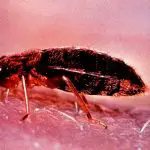Why Are Bed Bugs So Hard to Get Rid of?
Bed bugs are notoriously difficult to remove. They hide in folds, tufts, and creases, feeding off of the blood of humans as they sleep. Even if you manage to eliminate the bugs themselves, you may not eliminate all the eggs they lay. Bed bugs reproduce very quickly. One female produces an egg every day. This means that an infestation can quickly grow and spread if you don’t know how to get rid of them completely.
You can use a variety of products to get rid of bed bugs, but many don’t work. Bed bugs have a high resistance to many pesticides, making them impossible to completely eradicate. Moreover, it is not recommended to use heavy pesticides in a bedroom or living area. This means that you should avoid applying chemicals on your skin – this is because insect repellents do not work on bed bugs.
The fact that bedbugs are so resilient and difficult to eradicate suggests that they evolved in pockets somewhere in the world. The rise in air travel in the 1980s and 1990s led to a huge increase in the number of resistant bedbugs. In addition, the insect’s cryptic behavior means that it is difficult for humans to spot it during the day. Moreover, bedbugs can easily spread to different places, where they can continue to feed and breed.
A bedbug’s life cycle is a long one. It begins as an egg and progresses through a juvenile to adult stage. It grows between one and five millimeters in length. If there are evidences of this insect’s presence, you should remove all bed linens and place them in a double-plastic bag.








